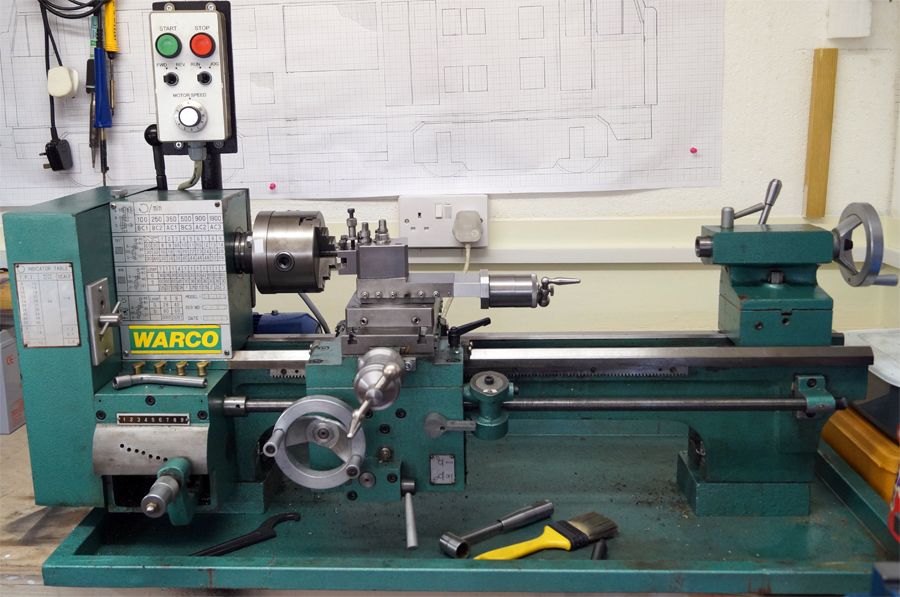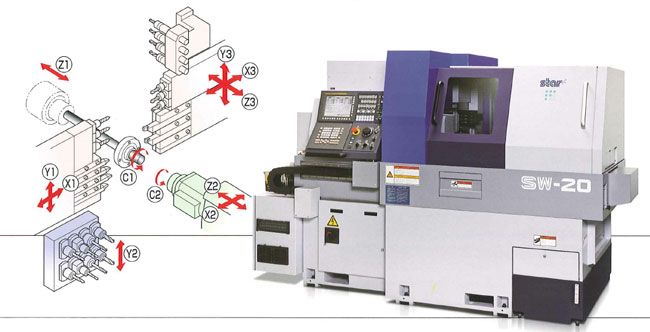Posted by Steviegtr on 13/03/2020 02:14:16:
The thing with the UK is. The engineering industry collapsed in the late 70's early 80's. This left thousands of milling machines + lathes & many more engineering machines on the scrap heap. You could buy these machines for the price of scrap cast iron.
…
The Colchester lathe he has is a similar story. Great British engineering. Gone forever. Same as steel & much more. Sorry I know I rant.
Steve.
Except British engineering moved on, rather than collapsed. Although Britain peaked as 'workshop of the world', about 1890, Belgium, Sweden, Germany, France and others had joined early in the 19th century. USA, Russia and Japan later but British engineers were competing with many different countries, most of them clever.
Although Victorian engineers were 'can-do'. 20th century British manufacturing was often reluctant to adopt new ideas. Too much, 'we invented it, job done'. Johnny Foreigner's cheap goods must be low quality. Customers didn't agree!
Geography also forces change. Sheffield once had good iron-ore, coking coal and water. Being inland was a problem but canals and railways helped. However, hard to profit making cheap steel in Sheffield, so they moved up to superior steels and finished products made from it. Worked well until local coal and iron ore ran out. Sheffield struggled on with the heavy cost of transporting raw materials to the City but engineering success withered. Many other examples. When any business is unsuccessful the important thing is to move on, not to mourn it.
Got an excellent old book on how to make money from lathes. After 1900 machine tools changed rapidly. HSS meant rigid powerful machines, electric motors were replacing line-belts, and various forms of automatic were appearing. In the UK all innovations were attacked as inferior.
Book critical of British lathe makers because the USA was leaping ahead. British makers made to order and delivered about a year later. In a fast moving market, the delay cost customers big money. British lathes were made to last about 60 years, but were simple. It was assumed labour to work them would always be cheap. They cost more than modern US lathes available off-the-shelf for quick installation.
US lathes were criticised in the UK as being flimsy, but the book explains that doesn't matter. A tool only has to pay for itself and make a predictable profit within a known time. Second, it was clear factories using manual lathes were becoming uneconomic. Third, customer needs changed – manual lathes weren't a good way of mass-producing 20th Century components. Fourth, it was obvious to forward thinkers there were many opportunities to further automate machine tools, and it would thus be possible to reduce the number of expensive skilled men on the payroll.
Further, not smart to expect a machine tool to stay competitive for more than 5 to 10 years. Buying lathes to last 60 years is unwise. A factory with skilled men making Carburettors on manual lathes will lose out to a factory making the same carburettor with semi-skilled men on semi-automatics. They in turn will be bankrupted by carburettors made by unskilled men and automatic machines. Rapid change in methods and costs led to the apparent collapse in the 1980s when industry were forced to dump uncompetitive methods. I don't believe the change was managed well, but it had to happen.
Today, engineering is deep into CAD/CAM, and 'our' sort of engineering is a niche. True it's important for prototyping & ad-hoc requirements etc, but what Model Engineer's do isn't mainstream. Technical Colleges don't teach machining because Industry has little need for those methods.
Plenty of machining still going on in the UK, but it's moved on to CNC and especially Machine Centres and Work Centres. In a Work Centre jobs move automatically through a group of Machine Centres. These have many axes, and are almost entirely automated. Myford, bless 'em, were never in this market.
Most Machines Centres are far too big for a home workshop, but this might do.

The Star SW20 has 11-axes of which 3 can cut at the same time. Weighs 7100lbs and can drill, tap, turn and mill. The main spindle and sub-spindle are driven at up to 10000 rpm by a 5HP motor. Front tool carrier has 4 turning tools & 3 rotary. Rear tool carrier has 6 turning tools & 3 rotary. The Back-working tool-carrier holds 8 turning tools and 4 rotary tools. All three carriers have 1.6HP at 8000rpm.
Most of the skill is at the design stage, not at the machine. The tool is operated remotely or from the console pictured. No-one cuts metal by hand or sharpens HSS!
These things are fairly useless in a home workshop. My Chinese Lathe & Mill are far more fun. But for manufacturing, the day of the manual machine, however well-made is over. Difficult to make a living out of them.
British Industry is performing financially as well as it ever did. Different, not gone. Through rose-tinted glasses I regret it, but who would want to do 80 hour weeks in a Victorian factory?
Dave
Hopper.







